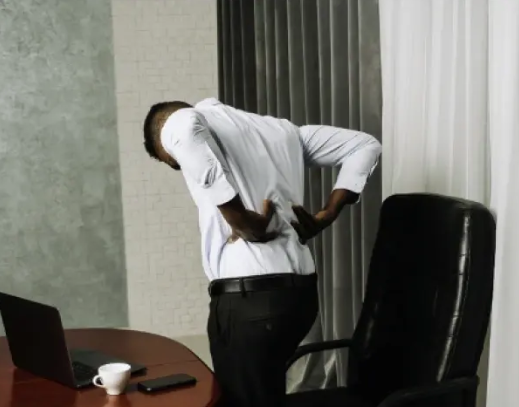Today we're setting our sights today on a condition that many face: trying to sit comfortably with the painful condition of disc degeneration. For those who have been on the journey to find a seating solution that provides some relief, the road can be daunting. But we're here to help you navigate the world of office chairs specifically designed to provide comfort and well-placed support for disc degeneration. Realizing the impact of the correct chair is crucial. A well-chosen chair has the potential to transform your daily comfort and enhance productivity.
Understanding the Nature of Disc Degeneration
Disc degeneration refers to the wear and tear of the spinal discs over time. As these discs wear down—a process known as degeneration—they lose their capacity to act as effective cushions between the vertebrae. This pain might be confined to one area or spread and can sometimes be paired with a numbing sensation.
The Critical Role of Ergonomics in Office Chairs
When grappling with the discomfort of disc degeneration, one cannot emphasize enough the need for ergonomically designed chairs. Constructed with precision, these chairs offer comfort and reinforcement for individuals dealing with spine-related issues, including disc degeneration.
Zeroing in on the Best Chair: Considerations to Keep in Mind
Searching for the ultimate chair for those battling disc degeneration isn't just about finding something plush to sit on. It's way more nuanced. What we're really seeking is a chair truly caters to the unique challenges that come with disc degeneration. Let’s break down those must-have features and design elements so you know exactly what to keep an eye out for:
Highlighting PELVIS SUPPORT
Though lumbar support is the most popular design for office chairs, pelvis support is actually the unsung hero. Adjustable pelvis support that hits you lower in the spine, can make a world of difference. Aligning the pelvis correctly ensures the spine follows suit, thereby alleviating undue pressure.
Custom fit is Non-negotiable.
A chair should fit you like a glove. Features such as adjustable seat height, a two-part back feature, armrest positioning, and tilt angles allow you to customize the chair to your specific needs. This tailored design ensures you adopt a posture that optimizes both your comfort and productivity.
Tilt Over Recline
Many chairs have a recline feature, but for those with back issues, the tilt function is far more helpful. Tilt mechanisms ensure the seat and back move in harmony, PRESERVING GOOD POSTURE. Reclining, on the other hand, can cause your pelvis to tuck and disturb your spine alignment, which might intensify the discomfort associated with your condition.
Seat Depth and Quality of Cushioning
Achieving the correct seat depth is vital for spinal alignment and to reduce pressure on the lower back. Equally, the cushion's quality plays a pivotal role. A chair with a contoured cushion design can offer even weight distribution, striking the balance between support and comfort.
Understanding the importance and worth of a thoughtfully designed office chair: it's a commitment to your own well-being.
Navigating disc degeneration calls for informed decisions. Remember, the right chair is more than just furniture. It's an investment in your well-being, a tool designed to better your work experience by reducing the severe discomfort of disc degeneration. Do your homework. Your back will thank you!
If you are looking to improve posture and decrease pain while sitting, look no further than Anthros. Anthros is the only chair in the world that is guaranteed to improve posture or your money back. The science-backed, patented design is registered with the FDA as a posture-improving chair and is proven to have the lowest pressure (most comfortable) cushion on the planet (verified by university testing).
Take the next step to reducing pain, increasing comfort, and maximizing performance!

Reference:
1. Makhsous M, Lin F, Bankard J, Hendrix RW, Hepler M, Press J. Biomechanical effects of sitting with adjustable ischial and lumbar support on occupational low back pain: evaluation of sitting load and back muscle activity. BMC Musculoskelet Disord 2009; 10, 17.
2. Zhang, L., Helander, M. G., & Drury, C. G. (1996). Identifying factors of comfort and discomfort in sitting. Human Factors, 38(3), 377–389. https://doi.org/10.1518/001872096778701962
3. Kreutz, D. (1997). Power tilt, recline or both. Team Rehab Report ,March. 29 – 31.
Recent Post

Exercises to Avoid With a Herniated Disc
March 6, 2025A herniated disc can put a serious damper on...

Gentle Back Exercises for Lower Back Pain & Herniated Discs
February 17, 2025Adding a cushion to your office or gaming chair...

Bulging Disc vs. Herniated Disc:
February 5, 2025Adding a cushion to your office or gaming chair...





